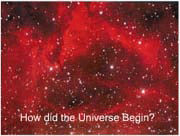Last week, President Barack Obama was in Asia to declare a cold war with China. Hopefully the U.S.-China cold war won’t be like the one fought with the Soviet Union that brought the world to the brink of nuclear annihilation and cost trillions of dollars over 60 years.
The crux of the conflict is China’s attempt to assert its sovereignty over the South China Sea, a resource-rich conduit for roughly $5 trillion in annual global trade, of which $1.2 trillion is American, which U.S. Secretary of State Hillary Clinton declared last year a matter of “national interest.”
Beijing’s assertive behavior in the South China Sea precipitated calls from Asian allies for the U.S. to deepen its involvement to be a strong counterweight. Those calls led to the formulation of Obama’s new Asia strategy, which administration officials admit changes America’s “military posture toward China” into something like the former East-West cold war. The first shots of the new war were heard last week.
President Obama, while traveling in Asia, fired the first rounds of the cold war when he declared the U.S. is a “Pacific nation,” and we intend to play "a larger and long-term role in shaping this region and its future.”
“I have directed my national security team to make our presence and missions in the Asia Pacific a top priority,” Obama said. The region “is absolutely vital not only for our economy but also for our national security,” and then the President and his representatives unveiled an avalanche of cold war-like initiatives intended to counter China’s influence.
The U.S. will increase its military presence in Asia. Obama announced an agreement to permanently station 2,500 Marines in Australia, and to increase combat aircraft such as B-52 bombers and aircraft carriers traveling to Australia. This compliments 28,000 troops already stationed in South Korea, and 50,000 in Japan.
On the economic front, Obama announced an Asia Pacific free trade deal, called the Trans-Pacific Partnership, that excludes Beijing. He also used the trip as an opportunity to admonish the Chinese to “play by the rules” and repeatedly criticized Beijing for undervaluing their currency, which makes American goods more expensive.
On the diplomatic front, Obama attended the East Asia Summit (EAS) in Bali, Indonesia - the first time an American president has attended the annual event. Obama wants the EAS to serve as a decision-making body for policy in the region.







